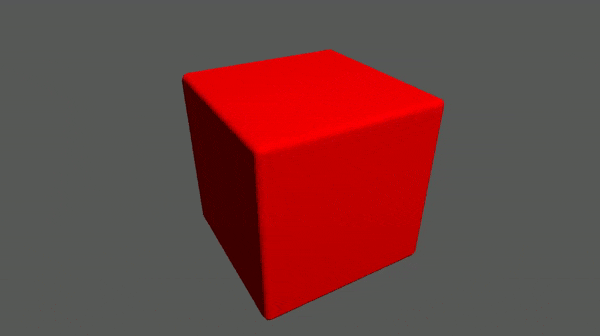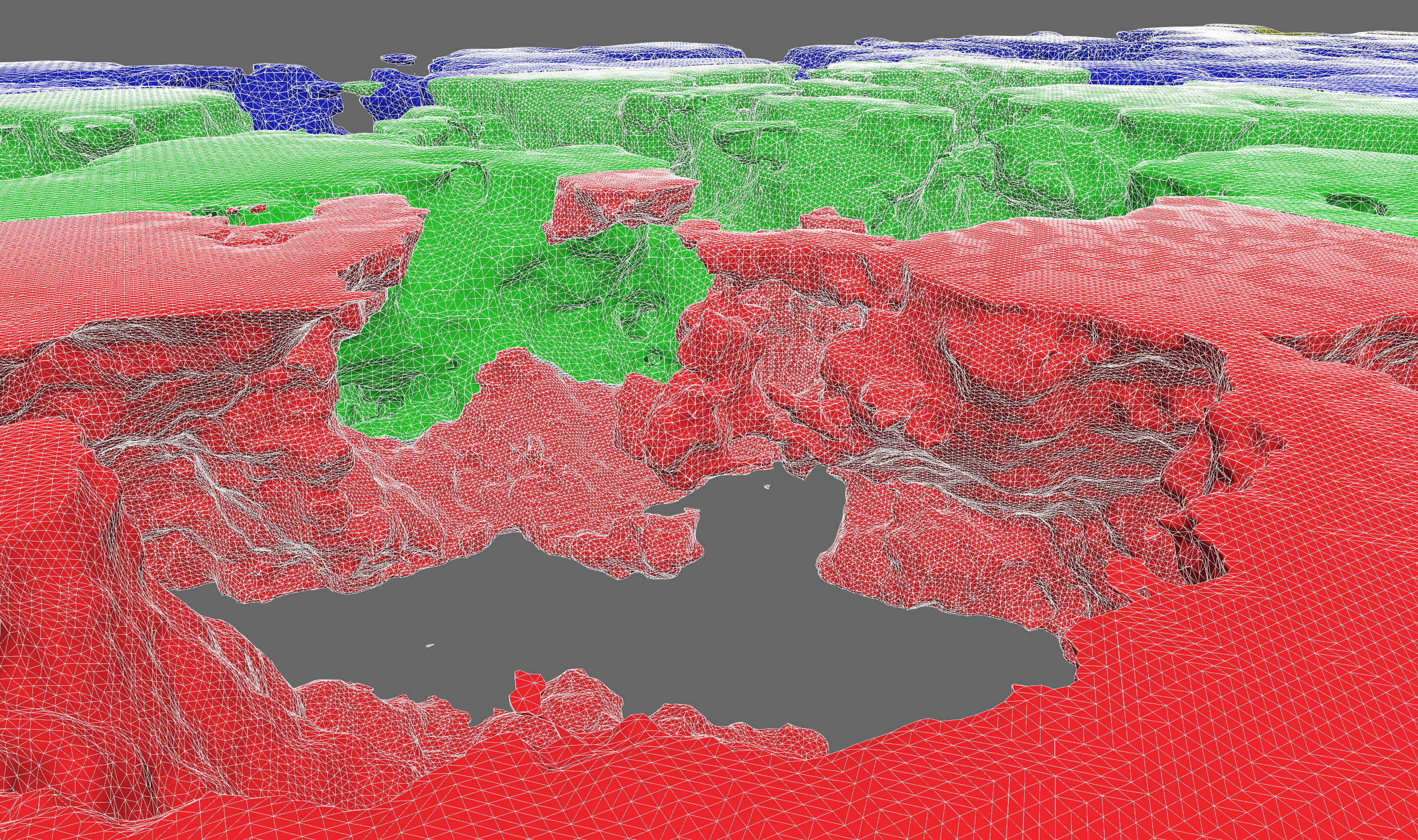bonsairobo / Building Blocks
Programming Languages
Projects that are alternatives of or similar to Building Blocks
building-blocks
Building Blocks is a voxel library for real-time applications.
The primary focus is core data structures and algorithms. Features include:
- 2D and 3D data storage
- mesh generation
- Surface Nets isosurface extraction
- Minecraft-style greedy meshing
- height maps
- spatial queries
- sparse traversal and search over octrees
- ray casting and sphere casting against octrees with
ncollide3d - Amanatides and Woo ray grid traversal
- pathfinding
- level of detail
-
OctreeChunkIndexas a hierarchical index of chunk IDs -
ChunkPyramidfor multiresolution voxel data and downsampling - algorithms for finding active chunks and updates to a 3D clipmap
- multiresolution Surface Nets (TODO)
-
- procedural generation
- sampling signed distance fields
- constructive solid geometry with
sdfu
Short Code Example
The code below samples a signed distance field and generates a mesh from it.
use building_blocks::{
core::sdfu::{Sphere, SDF},
prelude::*,
mesh::{SurfaceNetsBuffer, surface_nets},
};
let center = Point3f::fill(25.0);
let radius = 10.0;
let sphere_sdf = Sphere::new(radius).translate(center);
let extent = Extent3i::from_min_and_shape(Point3i::ZERO, Point3i::fill(50));
let mut samples = Array3x1::fill_with(extent, |p| sphere_sdf.dist(Point3f::from(p)));
let mut mesh_buffer = SurfaceNetsBuffer::default();
let voxel_size = 2.0; // length of the edge of a voxel
surface_nets(&samples, samples.extent(), voxel_size, &mut mesh_buffer);
Learning
Design and Architecture
There is a terse design doc that gives an overview of design decisions made concerning the current architecture. You might find this useful as a high-level summary of the most important pieces of code.
Docs and Examples
The current best way to learn about the library is to read the documentation and examples. For the latest stable docs, look here. For the latest unstable docs, clone the repo and run
cargo doc --open
There is plentiful documentation with examples. Take a look in the examples/ directory to see how Building Blocks can be
used in real applications.
Getting Started
This library is organized into several crates. The most fundamental are:
- core: lattice point and extent data types
-
storage: storage for lattice maps, i.e. functions defined on
Z^2andZ^3
Then you get extra bits of functionality from the others:
To learn the basics about lattice maps, start with these doc pages:
After that, you might be interested in hierarchical structures to help you scale your voxel application. For that, you'll want to read the multiresolution module doc page.
Benchmarks
To run the benchmarks (using the "criterion" crate), go to the root of a crate and run cargo bench. As of version 0.5.0,
all benchmark results are posted in the release notes.
Configuration
LTO
It is highly recommended that you enable link-time optimization when using building-blocks. It will improve the performance of critical algorithms like meshing by up to 2x. Just add this to your Cargo.toml:
[profile.release]
lto = true
Cargo Features
Building Blocks is organized into several crates, some of which are hidden behind features, and some have features
themselves, which get re-exported by the top-level crate. By default, most features are enabled. You can avoid taking
unnecessary dependencies by declaring default-features = false in your Cargo.toml:
[dependencies.building-blocks]
version = "0.5"
default-features = false
features = ["foo", "bar"]
Math Type Conversions
The PointN types have conversions to/from glam, nalgebra, and
mint types by enabling the corresponding feature.
Compression Backends and WASM
Chunk compression supports two backends out of the box: Lz4 and Snappy. They are enabled with the "lz4" and "snappy"
features. "lz4" is the default, but it relies on a C++ library, so it's not compatible with WASM. But Snappy is pure Rust,
so it can! Just use default-features = false and add "snappy" to you features list.
VOX Files
".VOX" files are supported via the dot_vox crate. Enable the dot_vox feature to expose the
generic encode_vox function and Array3x1::decode_vox constructor.
Images
Arrays can be converted to ImageBuffers and constructed from GenericImageViews from the image
crate. Enable the image feature to expose the generic encode_image function and From<Im> where Im: GenericImageView
impl.
Signed Distance Field Utilities (sdfu)
The sdfu crate provides convenient APIs for constructive solid geometry operations. By enabling
this feature, the PointN types will implement the sdfu::mathtypes traits in order to be used with these APIs. The sdfu
crate also gets exported under building_blocks::core::sdfu.
Development
We prioritize work according to the project board.
If you'd like to make a contribution, please first read the design philosophy and contribution guidelines.
License: MIT







